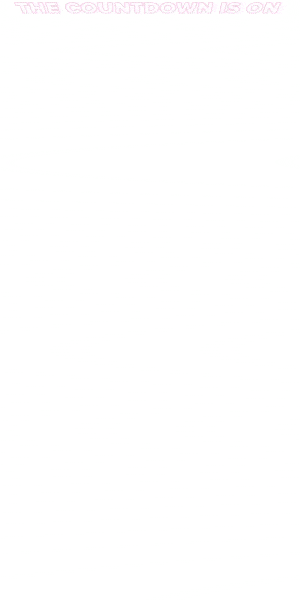NASA’s chief human capital officer on HR’s role in the post-pandemic world
We spoke with NASA’s Jane Datta to find out how the federal agency is thinking about the future of work.
Why You Should Care
Jane Datta, NASA's chief human capital officer, speaks to UNLEASH about the future of work, the agency's changing HR tech stack, and the innovation coming HR's way.
A look at why HR will play a vital part in digital transformation for years to come.
Datta explains why she's excited about the data landscape and the promise of AI.
The pandemic has caused a seismic shift in how many employers view and think about the office.
But, if one organization knows remote working well, it’s NASA. I mean, I don’t think you can get more remote than astronauts working from space. Right?
We spoke to Jane Datta, NASA’s chief human capital officer, to find out how the agency is thinking about the future of work, the changes it’ll have to make to its HR tech stack, and the opportunities for HR moving forwards.

Jane Datta, NASA’s chief human capital officer
Datta, who joined NASA in 2007, says the past year has really brought the importance of virtual and collaboration tools to the fore.
“We’ve always had telework as part of our culture. We’ve always had collaboration tools […] but we’ve really moved forward leaps and bounds,” she tells UNLEASH.
Datta notes the agency went from having around 10% or 20% of people working remotely, some of the time, to 90% during the height of the pandemic.
This shift, she adds, forced the entire organization to figure out how to leverage tools that would allow it to fulfill its mission, while also enabling employees to connect with one another. “It sounds simple but it isn’t simple,” Datta says.
Despite all the hardships, COVID-19 has had a silver lining — it’s allowed NASA to really think about how technology can foster greater connections across the board.
“So, we’re really in a position to understand what they [the tech tools] can do for us and that is far more advanced that it would have been had we not had COVID-19 as an experience.
“For example, I’ve noticed that when you have a brick and mortar structure, it tends to be more about hierarchy and where the offices are, who you know, and you tend to talk to those who are near you.
“Virtual tools, however, actually favour inclusivity versus exclusivity. You can have more people connecting and they can connect with different people across the whole agency, to do work, but also to build different kinds of communities,” she adds.
It’s impossible to know whether this realization would have happened without the pandemic, but it’s clear it has been supercharged because of it.
And that’s the thing about digital transformation: it’s not a static process, it’s an ongoing journey of acknowledgement, adaptation, and improvement.
“What I would say is that the tools we use have improved significantly over the course of the past year. And we’ll continue to improve them,” Datta notes.
NASA’s HR tech stack
The agency is in the process of migrating from what Datta calls a “legacy approach” to HR tools and technologies.
These, she adds, are very specific to certain processes and, in some cases, homegrown.
Essentially, NASA is transitioning to a more cloud-based service, and more importantly, it’s pursuing a more integrated approach that will enable it to obtain and analyze more relevant and cohesive data.
“So rather than a discrete tool for every process, we’re moving in the direction of having a suite of tools whereby the underlying data can be related across different processes.”
That data analytics is broken will come as no surprise to many HR practitioners reading this — and while this may be holding a lot of organizations back, NASA decided to get creative during the pandemic.
In order to support the leadership team to understand the status of COVID-19, the team built a bespoke dashboard that plugged in data — including case and hospitalization rates — from an existing platform. In doing so, the team was able to make informed decisions about employee safety and the use of its facilities.
“So I think there’s going to be some sort of platform that brings those kinds of capabilities and this will be a strong feature as we go into the future of work,” Datta adds.
Is performance management broken?
Fragmented HR tech stacks and data sets can make performance management far more challenging for HR professionals. And while technology plays an integral part in this process, Datta believes intention is equally important.
Performance and productivity, Datta says, starts with supervisors. To that end, NASA hosted regular online sessions for managers during the pandemic. These were designed to facilitate debate among different teams and foster greater cohesion across the entire workforce.
“It was a way of building cohorts across the agency. We don’t have all the answers, the answers are not wrapped up in a tool or a process, they’re actually about how to make it work on the ground.
“And so, performance and productivity starts with the supervisors and then it extends out to the workforce because it’s really the tone that they set that allows the creativity and the sense of belonging,” Datta says.
The issue perhaps is that many organizations measure performance or productivity based solely on output without realizing it goes far beyond this.
“It’s not about being perfect and controlling everything. It’s about unleashing creativity … I think these are the keys to having real productivity gains at the agency, both in terms of just output but also in terms of creativity and innovation, which we have a lot of anyway.”
Datta says she’s witnessed first-hand how important supervisors, managers, and culture are to the temperament of the workforce when it comes to dealing with common issues such as childcare challenges, illness, and other things which “have been the hallmarks of the past year”. But, she adds, “we’ve still been able to have our mission work and send people to space and send rovers to Mars”.
“All of that is possible because we’ve been managed through our leadership and managers to allow people to safely work and also feel supported.
“We don’t just want people who manage work, we want people who manage people. And that’s the difference between having a really talented cadre of supervisors and not doing so,” she adds.
A dynamic feedback loop
When COVID-19 hit, businesses everywhere relied on surveys to gain insight into employee sentiment — and while this has proved useful, survey fatigue is also very real.
If employee uptake is low, HR professionals can find themselves chasing feedback that is potentially outdated by the time it’s received — and while surveys may serve a purpose in some instances, the time has now come to think about creating a more dynamic and intuitive feedback loop.
“I think the way in which we collect the voice of the workforce is going to get more varied and more sophisticated as we go forward. There are technologies available to do data collection events which can then be analyzed through AI.
“That to me is very exciting, but we’re not there yet. I am really interested in piloting software that can help us do that so that we can have a pulse on the workforce beyond what we get through the once a year survey, or the many surveys that we devise,” Datta adds.
Datta is also looking forward to tools that will enable customers, aka employees, to have access to data and do things for themselves.
This direct access will be facilitated by tools that are far more intuitive and will unlock huge transformational power for HR professionals, who’ll be spared a lot of admin and will instead be able to focus on strategy and employee care.
“The customer experience, and direct access, is another feature that I’m excited about. We’ve done a little bit of work in this area but we could do a lot more,” Datta adds.
The next generation of HR
2020 will likely go down in history as one of the most challenging periods of our lives. The HR function has shown resilience, strength, and leadership throughout the upheaval — and even though things are slowly returning to some semblance of normality, the work is far from over.
Now is the time to take stock of the lessons learned and continue the transformation journey sparked, and supercharged, by the pandemic.
“HR leaders need to help organizations build some muscle to be able to manage constant transformation and build agility,” Datta says.
Indeed, the world of work is completely different from what it was pre-pandemic. Employees are more empowered, HR leaders are more inspired, and I truly believe the function will successfully guide the C-suite and its workforce through the next wave of transformation.
Whether we go back to old habits (aka the office) or not remains to be seen but at least we know we have all the necessary tools at our disposal — and HR can rest assured that it passed the biggest remote working experiment in modern history with flying colors.
If you want to hear Jane Datta’s thoughts about the post-pandemic workforce, sign up for our FREE webinar happening today. Datta will be joined by Spotify’s VP of HR Alexander Westerdahl and AXA’s Kirsty Leivers, global head of culture, inclusion, and diversity. And if you can’t make it today, make sure you subscribe to our daily newsletter to receive the on-demand session recording.
Image credit: Jane Datta, NASA’s Chief Human Capital Officer, official portrait via NASA/Aubrey Gemignani.
Sign up to the UNLEASH Newsletter
Get the Editor’s picks of the week delivered straight to your inbox!

Columnist
Former editor of UNLEASH, Yessi is a seasoned tech journalist and regular contributor to Times Radio in the UK.

